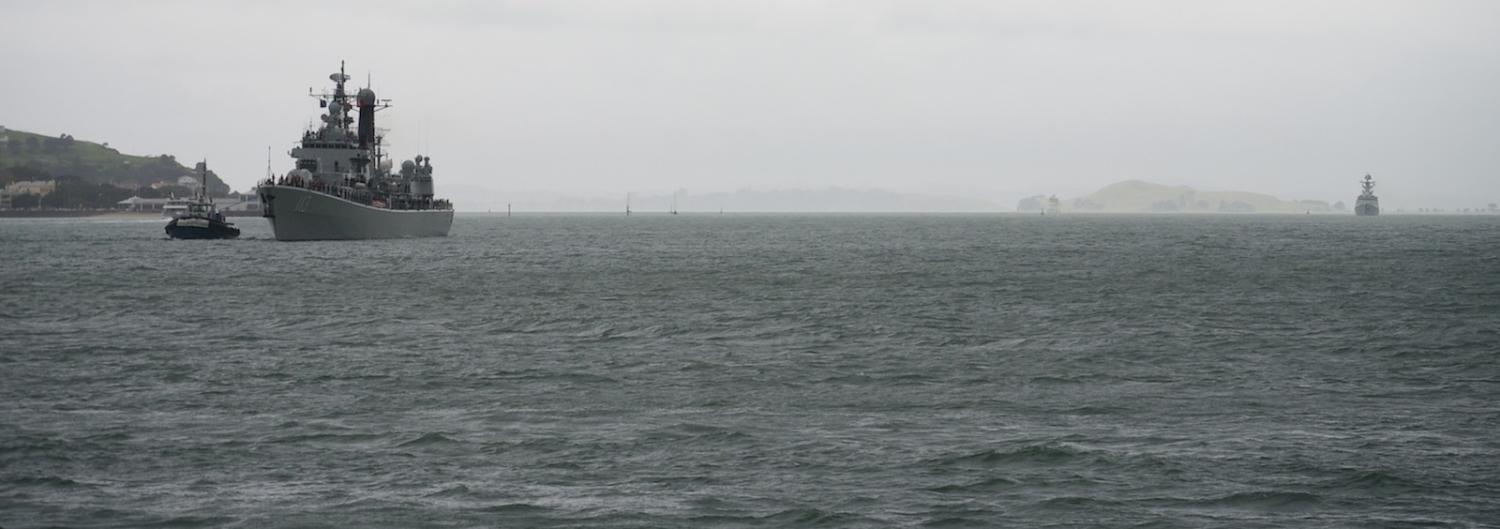Among the many questions raised by the massive modernisation and expansion of China’s Navy in the last few years is its future role in the Indian Ocean. Will the Indian Ocean become a Chinese lake?
China has gone from essentially zero presence in the Indian Ocean around a decade ago to a fairly sizeable fleet averaging perhaps four to five surface vessels (plus submarine deployments), although this number fluctuates during crossovers between transiting vessels. China now operates a naval base in Djibouti and no doubt has plans for additional bases in the region.
The geographical fact of (a potentially hostile) India, sitting in the middle of the Indian Ocean would make this an extraordinary challenge for China.
This expansion, together with the growth of China’s economic and political influence in the region, has led many to assume that China intends to displace the US Navy as the predominant navy in the Indian Ocean.
The worry is that the US Fifth Fleet will one day sail for home from the Persian Gulf, just as the Royal Navy did in the early 1970s, leaving China to step into US shoes. That scenario understandably makes a lot of people nervous, most of all New Delhi, which has its own aspirations in the Indian Ocean.
But how realistic is this, and are there other more realistic scenarios? What would be required for China to achieve sea control across the Indian Ocean in order to protect China’s energy supplies carried from the Persian Gulf and West Africa to China?
The geographical fact of (a potentially hostile) India, sitting in the middle of the Indian Ocean would make this an extraordinary challenge for China. It is not sufficient to protect only parts of these trade routes, they must be protected in their entirety. Putting aside the (real) question of whether it would make sense to try to blockade China in the Indian Ocean, it also seems hardly realistic for China to protect the entirety of its Indian Ocean sea lines of communication (SLOCs).
So, if sea control is not a realistic goal in the foreseeable future, then what are some other realistic missions for China in the region? The experience of the Soviet Navy during the Cold War might provide some clues.
Indeed, there are a number of strategic similarities between China and Russia in the Indian Ocean. Both are major Eurasian continental powers, but they are both effectively cut off from direct access to the Indian Ocean, which severely constrains their regional presence. Their navies can only reach the Indian Ocean after long voyages requiring them to transit maritime choke points of entry into the ocean – where they can be relatively easily observed, tracked, and interdicted. In the Indian Ocean, they are at a severe disadvantage, with only limited access to logistical maintenance support, likely in a small number of ports far apart. Resident Indian Ocean powers have corresponding strategic advantages.
Despite these disadvantages, the Soviets built a large naval presence in the Indian Ocean of up to 22 vessels at its height (a large proportion of them for logistical support). But the Soviet Navy’s missions were very different from those of the US Navy. Instead, the Soviet presence in the Indian Ocean reflected its own imperatives, which included countering US nuclear missile submarines, interdicting the movement of US forces into the region, protecting the Soviet fishing fleet, reinforcing Soviet regional influence, and potentially (at least in part) threatening US energy supplies. The Soviet fleet had limited SLOC protection capabilities, while its sea-denial capabilities were highly localised.
Beijing has its own set of strategic imperatives in the Indian Ocean region which would be expected to shape the nature of its presence. These not only include the security of SLOCs but, importantly, the protection of growing numbers of Chinese nationals and assets. China’s growing interest in the region suggests that the Chinese navy could be quite busy.
China’s naval presence has evolved to reflect several of these imperatives. For a decade it has been focused on anti-piracy operations and goodwill visits. China’s base at Djibouti is now used to support a broad range of tasks including peacekeeping operations and support for evacuation operations involving Chinese nationals. This will likely increasingly grow to include the protection of Chinese economic interests on land and at sea.
These missions will shape China’s naval presence. We should, for example, expect to see the regular or even permanent deployment of Landing Platform Docks (LPDs) to the Indian Ocean, which would be useful for many tasks ranging from disaster relief to evacuations to hostage interventions. In time, we’ll likely see occasional visits from Chinese aircraft carriers, although their role will likely be flag waving for the foreseeable future.
China’s capabilities may evolve to include limited contingency and sea-denial capabilities, particularly in the northwest Indian Ocean, giving it more options to respond to local contingencies. But any bid to achieve broad naval predominance to protect China’s SLOCs and potentially control the maritime trade of its competitors would be a major undertaking requiring many years of sustained naval expansion and the development of multiple local military partnerships.

